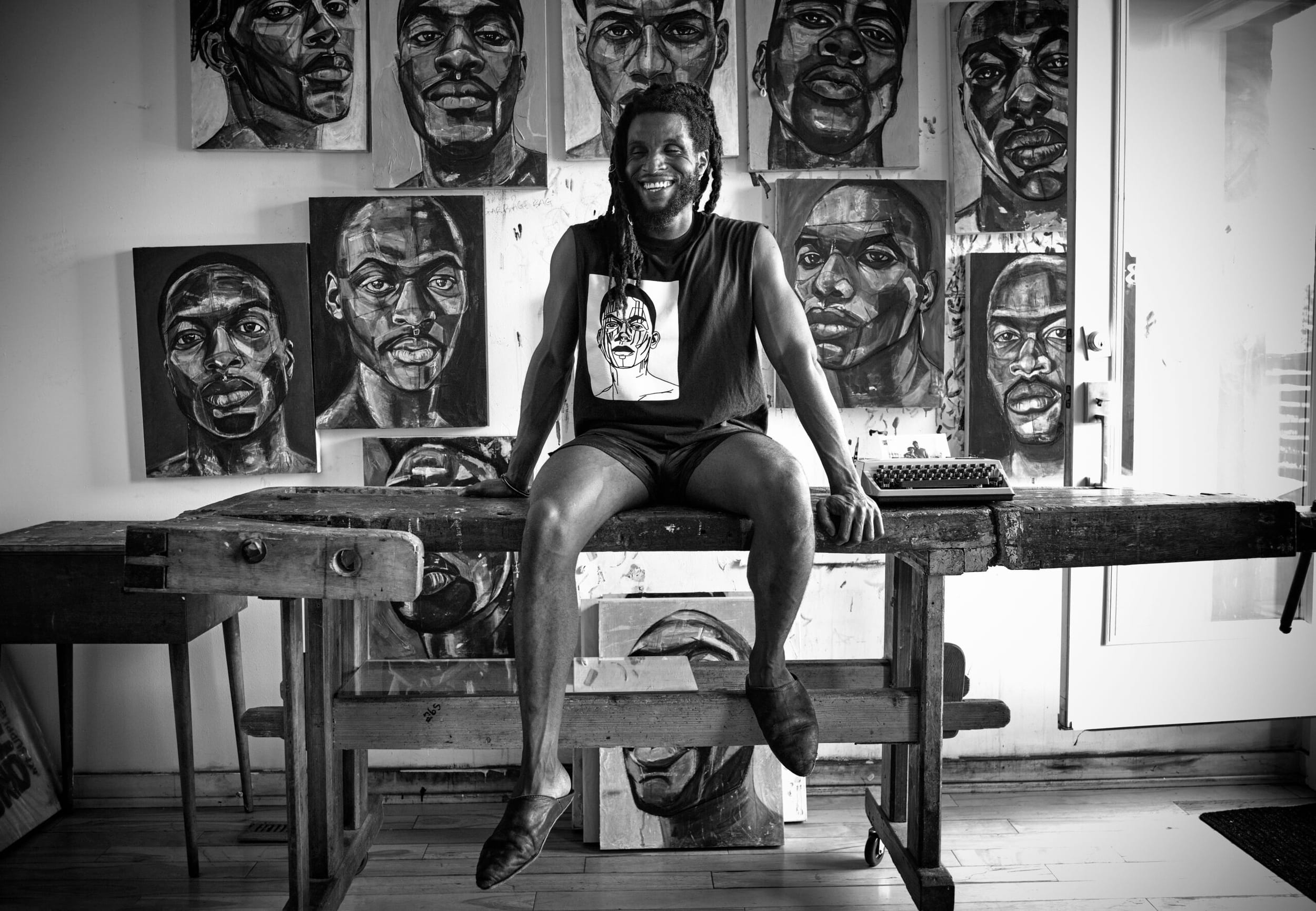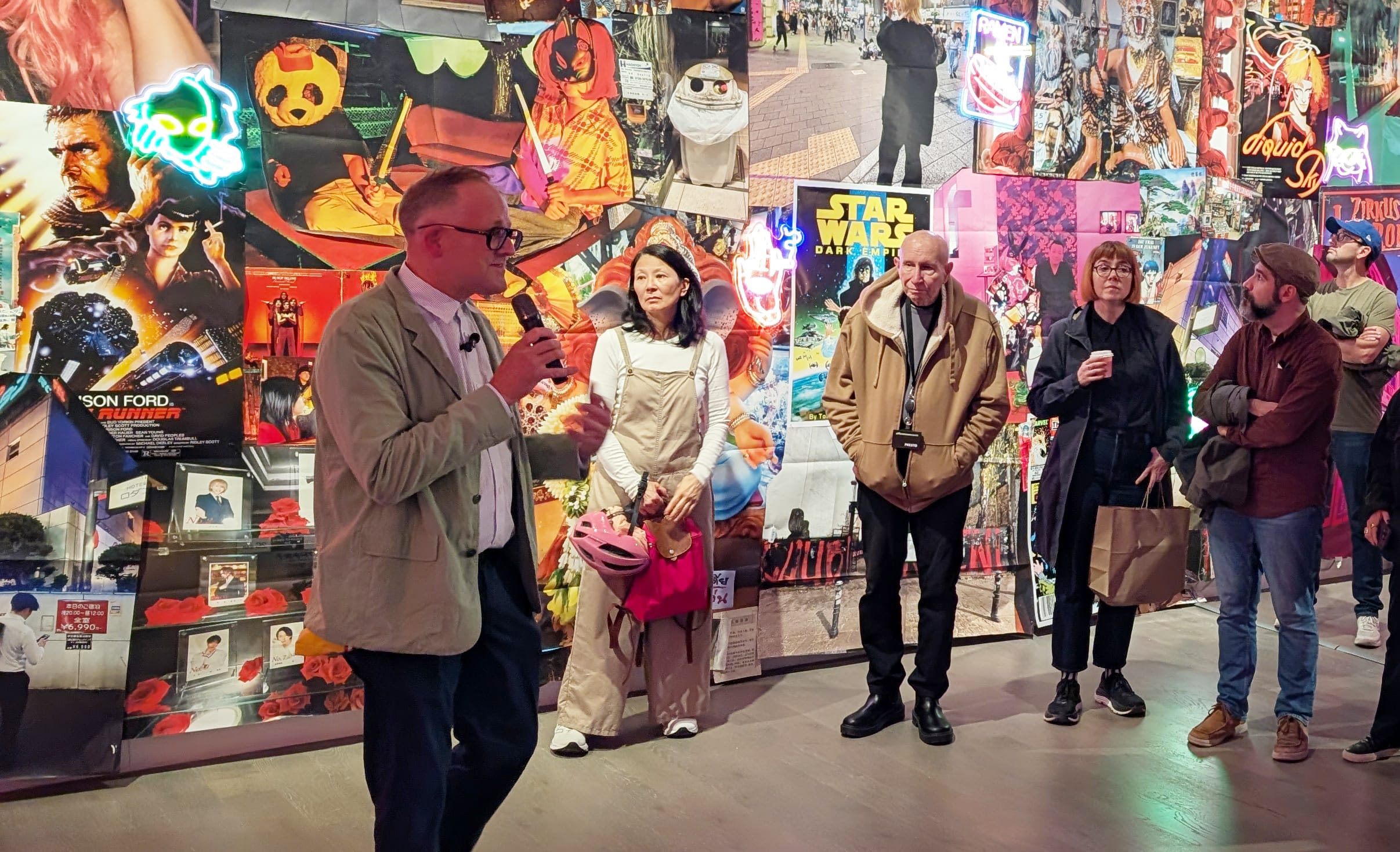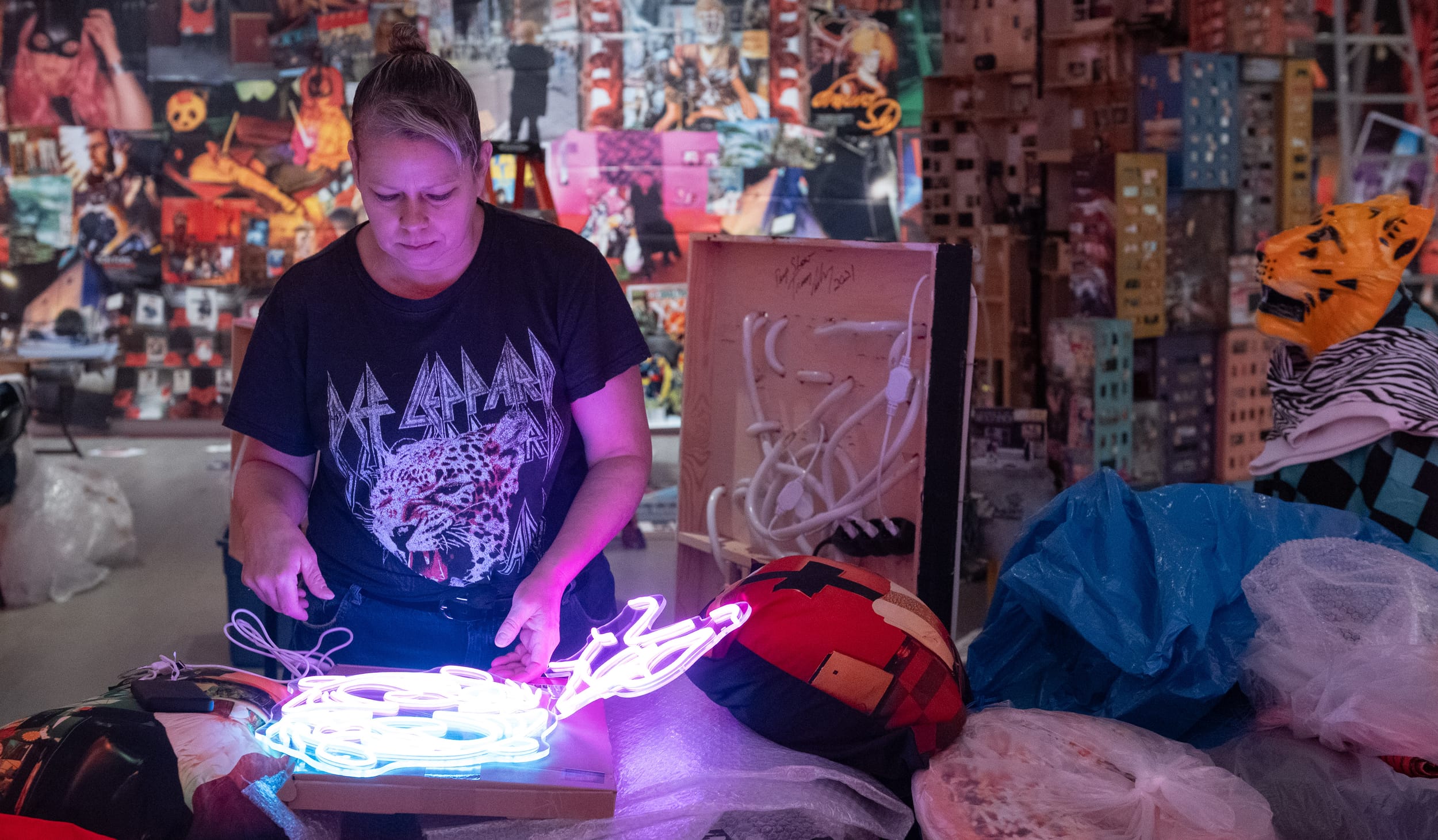Back to Babylon: One Last Dance to the Abyss
In collaboration with Koffler Arts, the Art of Time Ensemble are heading back to the Weimar era for one of their final shows. We spoke to the ensemble’s director Andrew Burashko about his journey into the legendary “human swamp of unfettered sexual desire.”

Whether your ideas of the Weimar era come from the depictions of Berlin cabaret culture in the writings of Christopher Isherwood, Bob Fosse’s film musical Cabaret, or the more recent glitz of the TV series Babylon Berlin, life in that moment feels, from a century’s distance, sticky in all the good ways—full of newfound freedoms and hopes that those who lived in it would grasp only fleetingly, as resentments in the broader culture turned against them. It was a Dance to the Abyss, as Art of Time Ensemble’s upcoming series of performances is titled.
“I've always been fascinated by the prurient proclivities associated with the Berlin of the twenties,” Art of Time’s founder and artistic director Andrew Burashko tells Arcade. “In particular, this idea of Berlin being a human swamp of unfettered sexual desire.”
For 25 years, Burashko’s ensemble has been doing its own sly, lascivious shuffle along the line between “high” art and low, through performances and recordings that celebrate all the weird little nooks between the two—from the Beatles and Leonard Cohen to Joni Mitchell, Gavin Bryars, and Radiohead. All that comes to an end this year with a final sweep of performances before the ensemble calls it a day. How fitting, then, that among its final shows, the ensemble journeys back to the Weimar for a weekend concert series at Harbourfront Centre (February 23-25), co-produced by Koffler Arts. “This idea of art music and popular music mixing,” says Burashko, “really, there was no time that I can think of where that was more prevalent than in Weimar Germany.”
In one last night of clubbing through the smoke-filled decadence the Third Reich would be so eager to stamp out, Dance to the Abyss will explore the glorious historical and cultural frictions in the dirty pop music of its time, with excerpts from Kurt Weill and Bertolt Brecht’s Threepenny Opera, as well as some of Mischa Spoliansky’s cabaret classics, along with works from less remembered composers. Singer Patricia O’Callaghan and composer John Millard are among the performers joining the ensemble on stage, while actor Martha Burns has a Dadaist surprise in store that we don’t want to spoil.
As Burashko points out, Weimar culture didn't happen in a vacuum, but was rather just one of the livelier beachheads for the post-war currents in modernism then sweeping Europe, which brought radical formal innovations across literature, music, art, dance, and cinema. A moment of “looking forward, and not looking back,” he says. Against a backdrop of political and economic volatility, the music played in Berlin’s cabarets found productive friction between the classical avant-garde with the newly arrived sound of American jazz, while the surrounding scene pushed the limits of conventional taste and morality. The music tells the story of a point on the other side of the Great War when all roads felt open. Not that everyone agreed. “Hitler,” Burashko suggests, “was the product of the Weimar Republic as much as anyone was.”
Integral to Burashko’s vision for the Weimar shows is what happens to music when freedom and hope are snatched away. In his introduction to the novel The Bass Saxophone, writer Josef Skvorecky recalls ten regulations for dance orchestras as set forward by a regional Nazi official during Czechoslovakia’s occupation. In their weirdly specific and funless details, Burashko tells me, we might begin to understand some of the sad absurdity of what never made it out of that moment.
- Pieces in foxtrot rhythm (so-called swing) are not to exceed 20% of the repertoires of light orchestras and dance bands;
- In this so-called jazz type repertoire, preference is to be given to compositions in a major key and to lyrics expressing joy in life rather than Jewishly gloomy lyrics;
- As to tempo, preference is also to be given to brisk compositions over slow ones so-called blues); however, the pace must not exceed a certain degree of allegro, commensurate with the Aryan sense of discipline and moderation. On no account will Negroid excesses in tempo (so-called hot jazz) or in solo performances (so-called breaks) be tolerated;
- So-called jazz compositions may contain at most 10% syncopation; the remainder must consist of a natural legato movement devoid of the hysterical rhythmic reverses characteristic of the barbarian races and conductive to dark instincts alien to the German people (so-called riffs);
- Strictly prohibited is the use of instruments alien to the German spirit (so-called cowbells, flexatone, brushes, etc.) as well as all mutes which turn the noble sound of wind and brass instruments into a Jewish-Freemasonic yowl (so-called wa-wa, hat, etc.);
- Also prohibited are so-called drum breaks longer than half a bar in four-quarter beat (except in stylized military marches);
- The double bass must be played solely with the bow in so-called jazz compositions;
- Plucking of the strings is prohibited, since it is damaging to the instrument and detrimental to Aryan musicality; if a so-called pizzicato effect is absolutely desirable for the character of the composition, strict care must be taken lest the string be allowed to patter on the sordine, which is henceforth forbidden;
- Musicians are likewise forbidden to make vocal improvisations (so-called scat);
- All light orchestras and dance bands are advised to restrict the use of saxophones of all keys and to substitute for them the violin-cello, the viola or possibly a suitable folk instrument.
So what happens when the mundane bureaucracy of fascism turns its attention to the stage, and tries to codify art in these ways? What did it sound like when we got not just to the edge of the abyss, then fell in? Work with the rules as given, in the best way possible, Burashko thinks. Break out the red-hot hoochie coochers, with a two-minute version of Cab Calloway’s “Minnie the Moocher” that Burashko describes “as slinky and sleazy and raunchy as possible”, then repeat it, four times , applying more of the rules each time. See how much hi-de-hi-de-hi-de-hi is left to ho-de-ho-de-ho-de-ho to, by the time you’re done.
Among the better known composers featured in the show, Burashko is particularly excited to showcase three works by Erwin Schulhoff, including his “Hot-Sonate” for alto sax and piano, five jazz etudes, and a cheekily surprising Dadaist piece. Burashko has maintained a deep fascination with Schulhoff’s music since he first encountered it in a New Music Concerts performance some three decades ago.
Schulhoff, a German Jew born in Prague, was celebrated as a brilliant composer during the ’20s and ’30s, and performed as a lead pianist with the top orchestras of the time. But it was Schulhoff’s “restless spirit” that continues to draw Burashko back. “He was influenced by serial music, by impressionism, Dada, and neoromanticism,” he explains. “He was influenced by Dvořák and Janáček. He was a communist by the social realism precepts of the Soviet Union, but primarily a lot of his late music was influenced by jazz, and he was actually a brilliant jazz musician himself. His jazz-influenced compositions, while they weren’t jazz, in that they weren’t improvised, were so much closer to what jazz, as the dance music of the ’20s, was meant to be.”
Now that Art of Time, after a quarter century, is coming to its end, Burashko is clearly looking forward to the other side of this final stretch. “Life is short,” he says. “And I’m exhausted from everything or by everything that has nothing to do with the art, of just sustaining an organization and all the work that goes into it. I just have no interest in doing that anymore.” And what if programmers still come calling, with requests to perform? “I’m hoping there will be some kind of life for Art of Time as a touring entity. If anybody wants to present any of our work, I’ll be there in a second.”
*
Dance to the Abyss, co-produced by Koffler Arts, runs at Harbourfront Centre from February 23 to 25. You can learn more and purchase tickets here. Wednesday, February 7, the Koffler gallery hosts Dr. Peter Harris for a free talk exploring Jewish contributions to the Weimar era.





